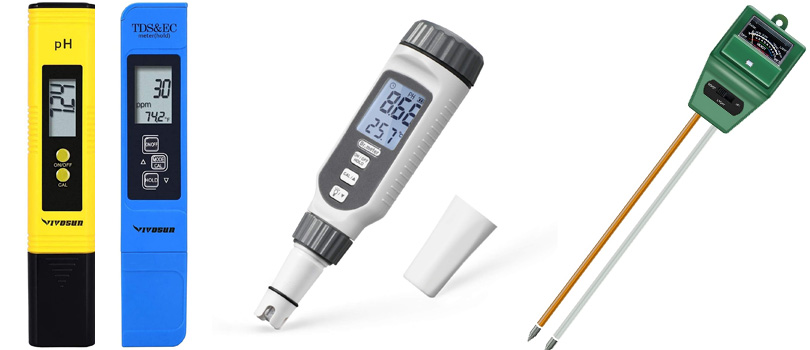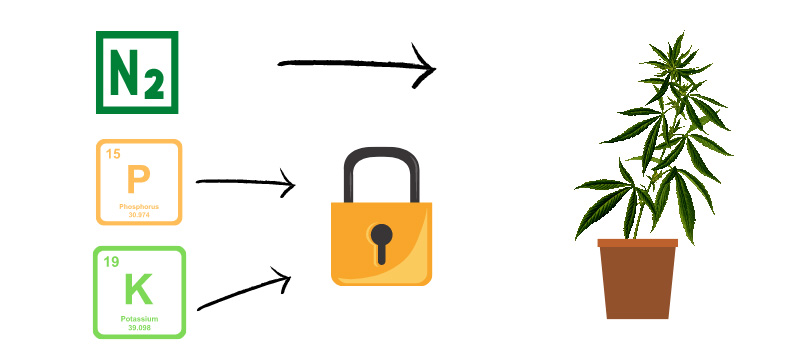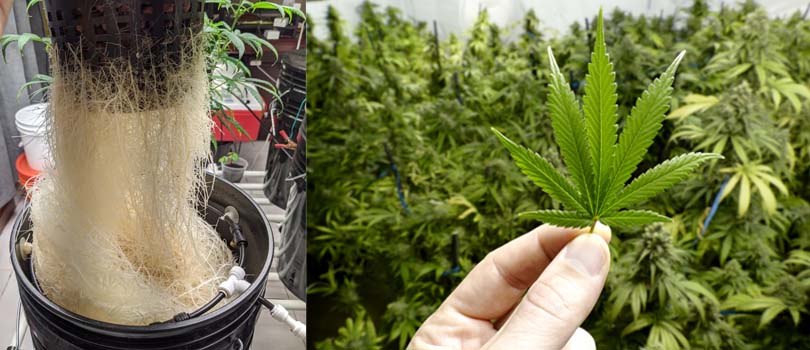Why You Need to Use a pH Meter When Growing Weed in Hydroponics
A primer on why you need to add a pH meter to your hydroponic tool kit. Discover the top three reasons to own a pH pen. Growing weed isn’t rocket science — or is it?
Growing weed isn’t rocket science — or is it?
The answer to this depends on two things:
- Did you enjoy chemistry class?
- Have you ever grown weed in hydroponics before?
If you’re like us, we had difficulty paying attention to chemical reactions and complex mathematical equations during school. Simultaneously, we couldn’t help wanting to yield massive buds from our cannabis crop.
Through trial and error, we found the ultimate recipe for stellar buds, monster yields, and fast growth — hydroponic-based media.
However, growing weed in hydroponics is entirely reliant on a single measurement — pH. Therefore, we dusted off our aging chemistry books to discover the importance of pH and how it drastically affects growing marijuana in hydro.
Now, it’s your turn to level up and learn why you need to use a pH meter. Discover how pH meters increase yield potential by unlocking nutrients in soilless-based media.
It’s time to leave the trauma of your chemistry class behind and embrace the power of pH. Read this guide from top to bottom if you’re ready to turn your marijuana grow room into a bud factory with the help of an affordable pH pen.
What Is a pH Meter?
Stop the press!
You don’t know what a pH meter is, and you’re growing cannabis in hydro? Talk about a disaster waiting to happen.
Before you destroy your entire marijuana crop, let’s hit the pause button and learn the definition of a pH meter.
A pH meter is a device, specifically a probe, that measures the hydrogen-ion activity within a liquid solution (i.e., tap water or nutrient solution). Overall, the pH meter’s measurement determines the alkalinity or acidity of a given solution.
If you would like to learn more about pH meters, head over to our Grow Bible and focus on Step Two — pH and nutrient meters.
Now, let’s move on to the main focus of this guide.

Here are examples of various pH meters.
Q: What is a pH meter?
A: A pH meter is a device, specifically a probe, that measures the hydrogen-ion activity within a liquid solution (i.e., tap water or nutrient solution). Overall, the pH meter’s measurement determines the alkalinity or acidity of a given solution.
Why You Need to Use a pH Meter
The number one question that beginners tend to ask is why should I buy a pH meter?
Growing marijuana in hydroponics without a pH meter is akin to diving into water without knowing how to swim. Although it’s an unfortunate example, the result is the same — death.
Let’s take a look at the three primary reasons why you need to use a pH meter.
Avoid The Dreaded Nute Lockout
The number one reason to use a pH meter when growing weed in hydro is to avoid a nutrient lockout, also known as a nute lockout.
A nutrient lockout occurs when there’s a pH imbalance. At first, you might say, well, isn’t cannabis a weed — tough love!
This would be the case if you grew marijuana in soil, which contains natural buffers to offset pH imbalances. However, hydroponic-based media works in an entirely different manner.
When growing cannabis in hydroponics, all nutrients have an absorbable range. Typically, a pH of 5.2-5.5 in hydroponics unlocks each nutrient. However, deviating from this optimal pH zone makes one or more nutrients unavailable to the cannabis plant.
Uh-oh…
That’s right — once one or more nutrients are locked out from the cannabis plant — an avalanche of problems begin. Here’s a list of signs and symptoms that your marijuana plant is locked out due to a pH imbalance:
- Slow growth
- Yellow leaves throughout the plant
- Purple stems
- Decreased water absorption
- Small flowers
As you can see, pH-based nutrient lockouts are nothing to f* with.
To make matters worse, all of the signs and symptoms of nutrient lockout mirror other problems, such as nutrient deficiencies, disease, and more. If you misdiagnose a pH-based nutrient lockout with, let’s say, a magnesium deficiency, and try to fix it with more nutrients, you will make matters worse.
Luckily for you, there is a simple tool to pinpoint a nutrient lockout — a pH meter. A pH pen allows you to check the nutrient solution’s pH before you feed the plants. By providing your marijuana plants a pH of 5.2-5.5, you’ll avoid the dreaded nutrient lockout.

Nutrient lockout happens when there’s a pH imbalance that locks out important nutrients.
Boost Nutrient Absorption For Maximum Yield
Feeding cannabis plants an expensive nutrient solution without a pH meter is akin to pouring money down the drain.
Unless you enjoy watching your investment dump in value, it’s time to get your marijuana plants on track with a pH meter. pH meters ensure your marijuana plants receive the nutrients they need to thrive.
By avoiding a nutrient lockout, your weed plants will flourish. Here’s a list of benefits when providing necessary nutrients to marijuana plants in hydroponics:
- Rapid growth
- Strong stems and branches
- Deep green foliage
- Increased nutrient uptake
- Maximized yield
The whole point of growing weed indoors or outdoors is to maximize the yield. pH meters guarantee picture-perfect pH ratios; therefore, it’s a no-brainer to use one.
Absolute Accuracy and Ease of Use
You must be thinking, with so many benefits of using a pH meter — there must be a catch, right?
No.
Instead, pH meters are easy-to-use and ultra-accurate. Aside from a bit of technical know-how during the calibration process, pH pens are your one-stop-shop for healthy and productive marijuana plants.

Using a pH meter ensures your cannabis plants will grow happy and healthy
Leave The Guesswork Behind With a pH Meter
Ultimately, pH pens allow you to make crucial decisions based on fact — not an assumption.
Whether you decide to grow in coco-coir, rockwool blocks, or pure hydro, pH meters are the ultimate bellwether that provide insight into the health of your marijuana crop.
Are you looking for more information on pH meters? Head over to our essential guides: How to Calibrate and Use pH Meters and How to Troubleshoot and Fix pH-Related Problems (Coming Soon).
